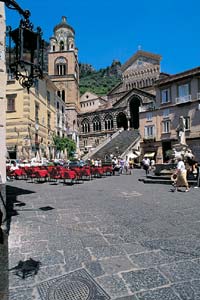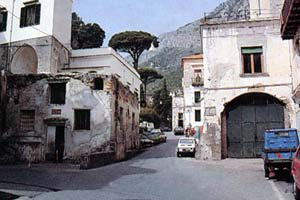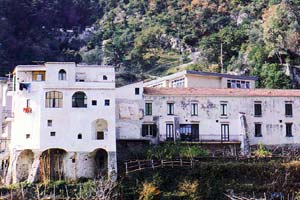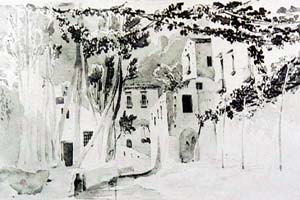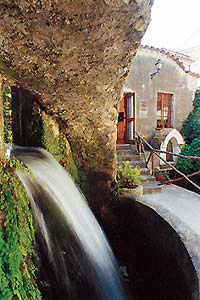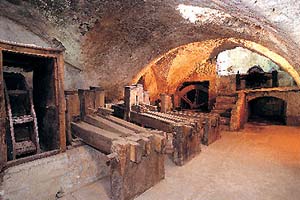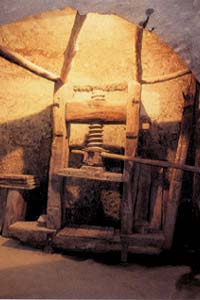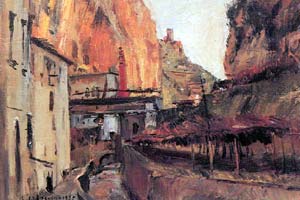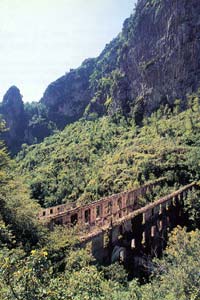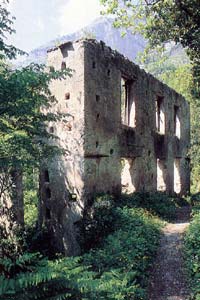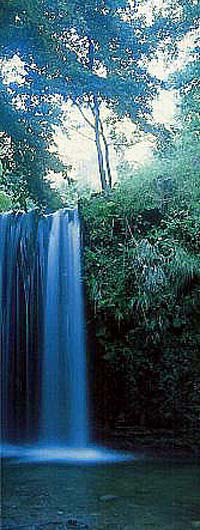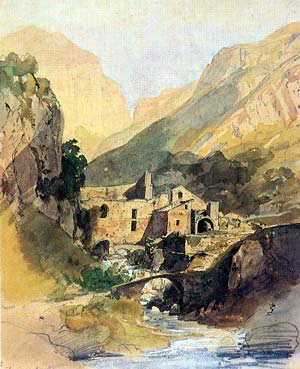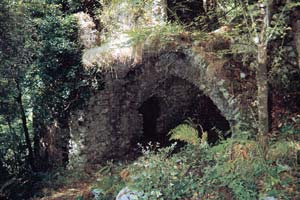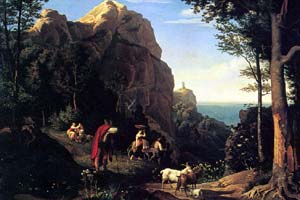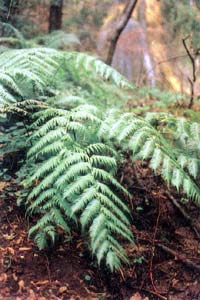| Green route» A VISIT TO THE HISTORICAL TOWN CENTRE |
Time: about 6 hours Difficulty: medium |
| Printable Version | |
| Via delle Repubbliche Marinare » Piazza
Flavio Gioia » via Lorenzo d’Amalfi » via Pietro
Capuano » via delle cartiere » Cartiera
Cavaliere » via delle cartiere »
Museo della Carta a Mano di Amalfi
» Museo dei Mestieri e dell’Arte
Contadina – Cartiera
Amatruda » via delle Grade Lunghe
» via Madonna del Rosario » Chiesa
della Madonna del Rosario » via Paradiso
» Valle delle Ferriere
» Ruderi delle Cartiere e della
Ferriera. Leaving from the Tourist Office we head for Piazza Duomo (Cathedral Square) and after tasting the cool water of the seventeenth century “Fontana del popolo” , also known as the fountain of St. Andrea, we take via Lorenzo d’Amalfi, the throbbing heart of the town
As we go ahead, on both sides of the road a number of smaller roads lead off the (Red route). Passiamo: il supportico “Ruga Nova” con il grande palazzo ad Passing through the passage way Ruga Nova we see on the corner a mansion that houses the remains of a Turkish bath of the XIII century, we pass via Pietro Capuano, Piazza Spirito Santo with the fountain called “Donkey’s head”, the arch-way “Faenza”, the ancient Arab quarter and 100 metres ahead in via delle Cartiere we see the Paper Mill Cavaliere that continues to produce . hand-made paper of Amalfi using methods introduced in the XVIII century…
On the left along via Casamare is the ward St. Basilio called after the ancient monastery of the XII century today adapted into private housing. Beyond, immersed in the luxuriant Mediterranean bush , the via Nuova per Amalfi, long steep steps that lead to the picturesque hamlet of Pogerola….We take this road on (Pale blue route), but now continue our walk…
Passing the recently built housing , we are now in the oldest and most interesting part of our walk: the ancient Valle dei Mulini (Valley of mills) or low Chiarito, as it was called in a past era to distinguish the area of the mills from that of the paper mills, or high Chiarito, in the depths of the valley. A famous watercolour by the German painter Karl Bleken shows the magic atmosphere of this area of Amalfi at its best….
A little more than 100 metres ahead we come to the Amalfi Museum of Hand-made Paper.
Housed in a paper mill that dates back to halfway
through the XIII century , the Museum was founded in 1969 at the
initiative of Cav.Nicola Milano, descendent of one of the most ancient
families of Master paper makers on the coast of Amalfi…
On the top floor there is an interesting Library of books about the sector, a collection of much printed matter on the history and techniques of the Paper industry… On leaving the Museum we go straight ahead, and passing the majestic brick chimney stack and a series of very old buildings, at the end of the road we reach the Museum of Country Arts and Crafts
Inaugurated in 1993, it holds a consistent collection of agricultural implements and craftsmen’ s tools all used on the Amalfi coast in the last four centuries… At the end of the road is the site of the Cartiera Amatruda (Paper- mill), that with that of Cavaliere, are the last two of the original sixteen that still produce the hand-made paper of Amalfi…. Turning back, arriving at the Paper Museum, on the left, we take via delle Grade Lunghe and straight after again keeping to the left , the steep via Madonna del Rosario, that takes us to the Church of the Madonna of the Rosary, built at the end of the XIX century after a terrible flood had washed away an earlier Church that was situated further up the hill…. In the space in front of the Church there is a beautiful view of the terraces of lemons that slope down to the bottom of the valley. A unique sight, fruit of the intelligence and centuries of hard work by the country-men architects who modelled the impervious territory to their cultivation needs-, but now we head north along the via Paradiso….
Straight ahead for at least a quarter of an hour passing the imposing ruins of the Cartiera Lucibello that overlooks the valley down on the left, we take a brief ramp of steps and arrive at the communal reservoir. At this point, the road becomes a mountain path that we follow until we reach the ruins of the Cartiera Nolli surrounded by a wild nature that has reclaimed its territory…
As we go ahead it becomes clear to us that between the XVIII and the XIX centuries this valley was the industrial centre between Amalfi- Scala-Pogerola. About 300 meters ahead we find the ruins of the Cartiera Martino, of the Milano, flanked by poplars, and the old hydro-electric works abridging the river…
Straight ahead along the river –side path we come to the Ancient Ironworks that gave its name to the whole area. In this factory since the XIV century the minerals that the ships of Amalfi brought back from distant Elba, Puglia and Calabria were worked. The factory gave work to the whole area with specializations that saw the people of Scala producing vegetable carbon, the precious combustion fuel for the forges and on the other side of the valley, the people of Pogerola provided the man-power in the forges or in tiny workshops that produced “Centrele”, the characteristic nails of Pogerola…
The abandonment was not entirely a misfortune because with the end of commerce, nature regained its dominion over the Valley. Wild nature in uncontaminated scenery that was once so dear to the Great Romantic Voyagers: Shinkel, Hare, Richter, Goethe to name just a few of those whose famous paintings and writings concerning the valley travelled around the world…
The fauna is typically Mediterranean, mostly animals of small dimensions but in the sheltered inner zone there are rare species such as: the lynx, the badger, large rapacious birds of prey amongst which we signal the magnificent Peregrine Hawk, and along the banks of the river, the salamander with glasses and the otter… The Valley has been declared an integral nature reserve with the scope of defending the unique eco-system…. Surrounded by this luxuriant nature, our walk
comes to an end… |
| Printable Version | X
Close |
